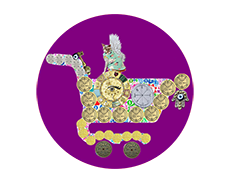Art Market Players – Key Industry Professionals & Roles
Art Market Players: Understanding the Art Business
Q: Who are the key players in the art market?
The main art market players include artists, art dealers, collectors, curators, critics, and auction houses.
Q: What role do artists play in the art market?
Artists are the creators of artworks, and their reputation, style, and demand significantly impact the value of their art.
Q: How do art dealers contribute to the art market?
Art dealers act as intermediaries, buying and selling artworks, connecting artists with collectors, and shaping market trends.
Q: What is the role of collectors in the art market?
Collectors acquire art for enjoyment or investment, influencing market trends through their purchasing decisions.
Q: How do auction houses influence the art market?
Auction houses facilitate sales in the secondary market, providing insights into market values and trends but can be competitive and unpredictable.
Q: What is the primary market in the art world?
The primary market refers to the first sale of an artwork, typically sold directly from the artist or through a gallery.
Q: What is the secondary market in the art world?
The secondary market involves the resale of artworks, usually through auctions, dealers, or private sales.
Q: How do art galleries support artists?
Galleries represent artists, promote their work, and set initial prices, helping establish an artist's market value.
Q: What is the role of art curators?
Curators select artworks for exhibitions, helping to establish an artist's reputation and market value.
Q: What is the purpose of art fairs?
Art fairs bring together galleries, artists, and collectors, facilitating sales and attracting buyers interested in new and emerging art.
Q: How do art advisors help clients?
Art advisors offer expertise and guidance on acquiring art, helping clients build and manage their collections.
Q: What factors affect the value of art?
Factors such as an artist's reputation, market demand, condition of the artwork, and historical significance affect the value of art.
Q: How do market trends influence art sales?
Market trends, driven by collector interest and current cultural and economic conditions, can significantly impact art sales.
Q: What is the role of art collectors in shaping market trends?
Collectors influence trends through their purchasing decisions, often driving demand for specific types of art or artists.
Q: How do art dealers and galleries work together?
Dealers and galleries often collaborate to promote artists, sell artworks, and manage collections for clients.
Q: What is the role of digital platforms in the art market?
Digital platforms provide new channels for art sales, exhibitions, and networking, expanding the reach of the art market.
Q: How do art enthusiasts engage with the art market?
Enthusiasts can engage by attending exhibitions, buying art, following market trends, and supporting emerging artists.
Q: Who are the key art market players to watch?
Key art market players include prominent galleries, auction houses like Christie's and Sotheby's, influential art critics, and high-end collectors.
Q: How do art market trends affect the industry?
Art market trends influence the demand and prices for artworks, with trends often driven by factors like economic conditions, cultural shifts, and technological advancements.
Q: What role do art advisors play in the art market?
Art advisors provide expertise to collectors and institutions, helping them navigate the market and make informed purchasing decisions.
Q: How do art market players engage with online platforms?
Players use online platforms for sales, marketing, and networking, as well as for staying informed about market trends.
Q: What are some emerging trends in the art market?
Trends include the rise of digital art, increased focus on diversity and inclusion, and growing demand for art from emerging markets.
Q: How do art market players address issues of authenticity and provenance?
Players use various methods, including documentation, expert appraisals, and technologies like blockchain, to verify the authenticity and provenance of artworks.
Q: What is the relationship between art market players and artists?
Players support artists through promotion, sales, and other forms of patronage, playing a critical role in their careers.
Q: What function do Auction Houses like Sotheby's and Christie's serve?
Auction Houses are major platforms for the secondary art market, facilitating high-profile public sales of artworks. They play a key role in establishing benchmark prices and market liquidity, especially for established artists.
Q: What is the significance of Museums in the art market?
Museums act as custodians of cultural heritage and confer historical significance. Their acquisition and exhibition of an artist's work can elevate their status, influence critical reception, and secure their long-term legacy.
Q: How do Art Critics and Academics impact the art market?
Art Critics and Academics shape art historical discourse and public perception. Their reviews, research, and scholarly publications can significantly influence an artist's reputation and the market's understanding of their work.
Q: In what way are Online Platforms changing the art market?
Online Platforms are democratizing access to art, offering new avenues for artists to sell directly, for galleries to reach global audiences, and for collectors to discover, research, and purchase art remotely.
Q: What distinguishes an Art Dealer from a Gallery?
While roles can overlap, galleries typically maintain a physical exhibition space and represent a roster of artists long-term. Dealers might operate more privately, focusing on buying and selling specific works, sometimes without a public venue.
Q: Why is understanding the interaction between these Art Market Players important?
The art market is an interconnected ecosystem. Understanding how these players influence each other—galleries promoting artists whose work collectors buy, which might later appear at auction—is key to grasping market dynamics.
Q: Are new types of Art Market Players emerging?
Yes, the digital age has introduced new players like NFT marketplaces, online art databases, fractional art investment platforms, and AI-driven art analytics services, expanding the traditional landscape.
Q: How do these players affect the transparency of the art market?
The art market has areas of both transparency (public auctions) and opacity (private sales). The interplay of different Art Market Players, and the rise of online data, contributes to an evolving level of market transparency.
Q: For an aspiring artist, which Art Market Players are most crucial to connect with initially?
For emerging artists, connecting with supportive galleries, other artists for community, and engaging with local art scenes to gain visibility among curators and early collectors is often a vital first step.
Q: If I'm a new collector, which Art Market Players should I engage with first?
New collectors often benefit from visiting reputable galleries, attending art fairs to see a wide range of work, and potentially consulting an art advisor to refine their tastes and make informed initial purchases.
Q: How do Art Market Players collectively determine an artwork's value?
An artwork's value is a complex consensus built by multiple Art Market Players: the artist's reputation, gallery representation, critical acclaim, collector demand, auction performance, provenance, and institutional recognition all play a part.
Q: How does globalization impact the roles and reach of Art Market Players?
Globalization means major Art Market Players—galleries, auction houses, fairs, and collectors—operate internationally, creating a more interconnected, albeit complex, worldwide market for art.
Q: Are the roles of traditional Art Market Players like galleries diminishing with online sales?
Not necessarily diminishing, but evolving. While online platforms offer new sales channels, the curatorial expertise, artist development, and physical experience offered by galleries remain highly valued by many artists and collectors.
Q: What is the key takeaway for anyone interested in the art world?
To truly understand the art world, one must recognize the distinct roles and symbiotic relationships among the diverse Art Market Players who collectively drive its energy, creativity, and commerce.
Q: How do investors participate as Art Market Players?
Art investors view art as an asset, purchasing works for appreciation in value and influencing trends through investment choices.
Q: What is the relationship between artists and other market players?
Artists are central Art Market Players whose creative output drives the entire ecosystem. Their relationships with galleries, dealers, and collectors determine career trajectories, while their artistic choices and market presence influence overall market dynamics and collector interest.
Q: How do institutional collectors differ from private collectors?
Institutional collectors (museums, foundations) are Art Market Players focused on cultural preservation and public education, while private collectors often emphasize personal taste and investment potential. Both significantly influence market dynamics but with different motivations and impact strategies.
Q: What impact do art investment funds have on the market?
Art investment funds represent a growing category of Art Market Players that bring financial sophistication and capital to the market. They influence pricing through systematic acquisition strategies and introduce traditional investment principles to art market operations.
Q: How do regional differences affect art market players?
Art Market Players operate differently across regions, with varying cultural preferences, regulatory environments, and economic conditions. Understanding these regional dynamics is crucial for anyone looking to engage effectively with the global art market ecosystem.
Q: What role do art schools and educational institutions play?
Educational institutions are important Art Market Players that shape future artists, critics, and collectors. They influence market trends through curriculum choices, faculty expertise, and graduate success, often serving as talent pipelines for the broader art ecosystem.
Q: What influence do art media and publications have?
Art media outlets are significant Art Market Players that shape public discourse, influence collector decisions, and provide market analysis. Their coverage can make or break artist careers and significantly impact market perception and valuation trends.
Q: How do government policies affect art market players?
Government regulations, tax policies, and cultural initiatives significantly impact Art Market Players by affecting import/export procedures, taxation on art sales, and funding for cultural institutions. These policies can reshape market dynamics and participant strategies.
Q: What role do art storage and logistics companies play?
Art storage and logistics providers are essential Art Market Players that enable the physical movement and preservation of artworks. Their services facilitate transactions between other market participants and ensure artwork integrity throughout the buying and selling process.
Q: How do emerging markets create new art market players?
Emerging art markets introduce new Art Market Players with different cultural perspectives, economic conditions, and collecting traditions. These new participants diversify the global art market and create opportunities for cross-cultural exchange and market expansion.
Q: What impact do art insurance companies have on the market?
Insurance companies are crucial Art Market Players that enable high-value transactions by providing risk management solutions. Their valuation requirements and coverage decisions influence market practices and provide additional layers of artwork authentication and documentation.
Q: How do art lawyers and legal professionals participate in the market?
Legal professionals are essential Art Market Players who handle contracts, authentication disputes, estate planning, and regulatory compliance. Their expertise enables complex transactions and helps resolve disputes that could otherwise disrupt market operations.
Q: What trends are shaping the future of art market players?
Future trends affecting Art Market Players include digital transformation, generational wealth transfer, sustainability concerns, and globalization. These factors are creating new participant categories while transforming traditional roles and relationships within the art market ecosystem.
For more detailed information, insights, and to discover which Art Market Players are shaping the industry right now, read the full content below.
Table of Contents
- Introduction
- The Passionate Collectors
- Art Dealers and Galleries
- Auction Houses
- Art Investors
- Artists and Their Role in the Art Market
- Art Funds and Institutional Investors
- Art Advisors and Consultants
- Legal and Regulatory Framework in the Art Market
- The Intersection of Passion and Investment
- Conclusion
- References
1. Introduction
Definition and Scope of the Art Market
The art market refers to the complex system that facilitates the buying and selling of art. It consists of various players, including collectors, investors, artists, dealers, galleries, auction houses, and other intermediaries. The art market is both a cultural and economic ecosystem that links people, institutions, and artworks. Art has historically held a significant place in human societies, and today, it serves not only as a form of expression and cultural heritage but also as an investment vehicle and speculative asset. As the global art market continues to grow, its players’ roles have evolved, creating a dynamic and multifaceted environment.
The art market’s economic value is immense. According to the Art Basel and UBS Global Art Market Report (2020), the global art market was valued at $50.1 billion in 2019. This market includes various segments, from fine art and collectibles to contemporary and digital art, with players contributing to its growth.
Overview of Art Market Players
The art market can be broken down into multiple categories of players, each with distinct roles and motivations. These include:
- Passionate collectors who buy art out of personal appreciation and connection.
- Dealers and galleries who serve as intermediaries, facilitating art transactions.
- Auction houses, which are the venues for public sales.
- Investors, who view art as an asset for financial gain.
- Artists, whose creations fuel the market.
- Art funds and institutional investors, whose capital shapes market trends.
- Art advisors and consultants, who provide strategic guidance.
Each group’s involvement in the art market is influenced by factors like cultural values, economic conditions, and evolving market trends.
2. The Passionate Collectors
Art collectors have always been pivotal figures in the art world. While the broader art market includes a range of players—from investors to dealers to auction houses—collectors hold a distinct position as both curators and consumers of art. Unlike investors who view art primarily as an asset for capital appreciation, passionate collectors acquire works of art because they are deeply moved by the work’s aesthetic, cultural, or emotional significance. Collecting art is more than just a financial transaction for these individuals; it is an emotional journey, a personal investment that often reflects their identity, values, and connection to the world of art.
The passionate collector’s involvement with art is shaped by an intrinsic motivation to gather and preserve objects of beauty, cultural value, or historical significance. For these collectors, art is not simply a commodity or a status symbol but a reflection of the individual’s aesthetic taste and personal expression. This section delves into the motivations of passionate collectors, their influence on the art market, and the various ways they interact with artists, dealers, galleries, and auction houses.
The Role of Collectors in the Art Market
A passionate collector is someone who actively acquires works of art out of personal interest and a desire to support the arts. The motivation behind this type of collection can vary, but it often involves a deep emotional connection to the work being collected. Collectors typically seek out art that resonates with them on a personal level, whether it is a particular medium, style, or artist. While some may purchase art to beautify their homes, others may seek to preserve history, contribute to a specific cause, or document cultural movements.
In contrast to investors, whose primary interest lies in the financial return on investment, passionate collectors place significant emphasis on the cultural, aesthetic, and historical value of the artworks they acquire. These collectors may develop lifelong relationships with artists, curators, and galleries, participating in the ongoing dialogue about art and contributing to the preservation of cultural heritage.
Collectors as Custodians of Art
Passionate collectors often view themselves as custodians of art rather than owners in the traditional sense. This mindset is rooted in a respect for the cultural, historical, and aesthetic value of the artworks they collect. For many collectors, acquiring a work of art is an act of preservation, ensuring that the piece is safeguarded for future generations to appreciate. This sense of stewardship can be particularly evident when collectors acquire works from emerging or underrepresented artists, who may lack the financial resources to promote their own work.
As custodians, passionate collectors are committed to maintaining the integrity of their collection. This often involves carefully curating their acquisitions, commissioning conservation efforts to maintain the work’s condition, and taking steps to ensure that the collection is passed down to future generations, either through donations to museums or private sales.
3. The Emotional Connection Between Collectors and Art
The Art as a Personal Experience
One of the defining characteristics of passionate collectors is the profound emotional connection they have with their artwork. For these individuals, collecting art is a deeply personal experience, one that goes beyond the superficial aspects of acquisition. Art has the power to evoke emotions, provoke thoughts, and inspire reflection, and many passionate collectors are drawn to works that resonate with them on an intimate level.
This emotional connection often extends beyond the aesthetic qualities of the piece itself. A collector may be drawn to a particular artist because of shared personal experiences or values, or they may feel a connection to the cultural or historical context in which the work was created. For example, a collector with a deep interest in environmental conservation might gravitate toward works of art that explore themes of nature, wildlife, and climate change. Similarly, a collector with a passion for social justice may seek out art that addresses issues of inequality, discrimination, or human rights.
In many cases, passionate collectors actively seek to build a collection that reflects their own personal beliefs, interests, and experiences. This process is a way for them to express their own identity, to share their values, and to create a personal connection to the broader world of art.
The Pursuit of Beauty and Meaning
For passionate collectors, art is often about more than just aesthetic enjoyment. It is about seeking beauty and meaning in a world that can sometimes seem chaotic or uncertain. Art offers collectors the opportunity to explore their own emotions and find solace, inspiration, or validation in works that reflect the complexities of the human experience.
The pursuit of beauty, however, is not limited to traditional or classical forms of art. Many passionate collectors are drawn to contemporary or avant-garde works that challenge conventional notions of beauty and push the boundaries of artistic expression. For these collectors, the art they acquire serves as both a means of self-expression and a way to engage with the ever-evolving dialogue of contemporary culture.
In this sense, passionate collectors are not just passive consumers of art; they are active participants in the ongoing creation and interpretation of meaning. Through their acquisitions, they contribute to shaping the cultural landscape, influencing the development of art movements, and engaging in the global conversation about what constitutes beauty, truth, and value in art.
═════════════════════════════════════════════════════
Elevate your collection, your spaces, and your legacy with curated fine art photography from Heart & Soul Whisperer. Whether you are an art collector seeking timeless investment pieces, a corporate leader enriching business environments, a hospitality visionary crafting memorable guest experiences, or a healthcare curator enhancing spaces of healing—our artworks are designed to inspire, endure, and leave a lasting emotional imprint. Explore our curated collections and discover how artistry can transform not just spaces, but lives.
Curate a life, a space, a legacy—one timeless artwork at a time. View the Heart & Soul Whisperer collection. ➤Elevate, Inspire, Transform ➔
═════════════════════════════════════════════════════
The Influence of Collectors on the Art Market
Shaping Market Trends
Passionate collectors play a significant role in shaping the trends and direction of the art market. By acquiring specific works or supporting particular artists, collectors help elevate certain styles, movements, or periods of art. Their preferences and purchasing behavior often set the stage for broader trends in the art world.
For example, when collectors begin to show interest in a particular artist or genre, it can spark a wider trend that attracts attention from galleries, auction houses, and other collectors. This can create a feedback loop in which the demand for certain works drives up prices, leading to greater visibility and increased value for the artist’s work. The collector’s involvement can help establish the reputation of an artist and pave the way for future success.
In some cases, passionate collectors have been instrumental in bringing attention to previously overlooked or undervalued artists. For example, collectors have helped raise the profile of women artists, artists of color, and other marginalized groups whose work may have been historically underrepresented in the mainstream art market.
Economic Impact and Price Appreciation
While passionate collectors may not primarily seek financial gain from their acquisitions, their purchases can still have a significant economic impact. As collectors acquire works from specific artists or galleries, they create a market for those works, driving up their value over time. This effect is particularly evident in the case of highly sought-after artists whose works appreciate in value as demand increases.
Moreover, the market presence of passionate collectors can help establish price benchmarks for particular artists or art movements. The prices that collectors are willing to pay for specific works help shape the broader art market’s understanding of value and rarity. For emerging artists, the support of passionate collectors can provide the necessary foundation for building a successful career and gaining recognition in the global art market.
Collectors as Trendsetters and Influencers
In addition to shaping the market by buying art, passionate collectors often influence the direction of artistic trends through their involvement with artists, galleries, and institutions. Collectors often act as tastemakers, setting the tone for what is “in vogue” in the art world. Their personal preferences can help elevate particular artists or movements, turning them into the next big thing in the art market.
Many collectors are also influential in the world of art exhibitions, fairs, and auctions. By purchasing works from specific artists or galleries, they help to create a buzz around those artists, attracting the attention of other collectors, investors, and institutions. As a result, passionate collectors can become key drivers of the success of certain artists or art movements.
The Collector-Artist Relationship
Building Long-Term Relationships with Artists
Passionate collectors often form long-term relationships with the artists they admire, supporting them both financially and emotionally. This relationship goes beyond the transactional nature of buying and selling art and can become an essential part of the collector’s experience. Through these relationships, collectors may gain deeper insights into the artist’s creative process, motivations, and vision, which in turn enriches their own understanding of the work.
Many collectors see themselves as mentors or patrons to emerging artists, providing not only financial support but also encouragement and recognition. Some collectors may even commission new works directly from the artist, enabling the artist to pursue their creative vision while also deepening their connection to the collector.
For emerging artists, the support of passionate collectors can be invaluable. Collectors provide a critical source of income, allowing artists to continue creating and exhibiting their work. Furthermore, the visibility that comes from having collectors who champion their art can help propel an artist’s career, opening doors to galleries, exhibitions, and wider recognition.
The Social and Cultural Impact of Passionate Collectors
Art as a Cultural Investment
For many passionate collectors, acquiring art is a way to engage with and preserve culture. Art serves as a bridge to the past, reflecting the social, political, and cultural dynamics of a given time. Collectors who focus on historical or culturally significant works often view their acquisitions as a form of cultural preservation, ensuring that future generations can experience and learn from the art of the past.
In this context, collectors are not only preserving works of art but also contributing to the ongoing cultural dialogue. Through their collections, they make statements about their values, beliefs, and connection to a broader cultural heritage. Art is thus seen not just as an aesthetic object, but as a vital part of the collective memory and identity.
Art as a Social Tool
Passionate collectors also often engage in social and philanthropic activities related to their collections. Many collectors use their artwork to foster dialogue within their communities, hosting exhibitions, lending works to museums, or sponsoring cultural events. This engagement with the broader public helps to democratize art, making it more accessible to people who might not otherwise have the opportunity to experience it.
Additionally, some collectors donate parts of their collections to public institutions, such as museums, ensuring that their art is shared with a wider audience. This philanthropic aspect of collecting helps ensure that art is preserved, appreciated, and accessible to future generations.
The passionate collector is a cornerstone of the art market, shaping its evolution and influencing the way art is created, valued, and shared. By acquiring works that speak to their personal interests, collectors support the arts in ways that go beyond financial transactions, becoming key figures in the art world’s ecosystem. Their emotional connections to art, their relationships with artists, and their impact on market trends all contribute to the dynamic nature of the art market, creating an environment in which art is appreciated not only
3. Art Dealers and Galleries
Art Dealers: Facilitators of Art Transactions
Art dealers are intermediaries who facilitate the buying and selling of artwork. They may operate independently or as part of larger galleries. Dealers typically have strong relationships with collectors, artists, and galleries, allowing them to match works of art with potential buyers. Dealers are often well-versed in art history and market trends, providing expertise to help clients make informed purchasing decisions.
Role of Galleries in Promoting Artists
Galleries serve as public spaces where artworks are displayed, and sales transactions occur. They often represent artists, helping to promote their work and gain visibility in the art market. Galleries also play a pivotal role in curating exhibitions, managing sales, and building an artist’s reputation.
Galleries typically earn a commission on sales, which is usually a percentage of the price at which the work is sold. They may also invest in artists by purchasing works upfront, giving them financial backing and allowing them to promote the artist’s work more effectively.
The Dealer-Gallery Relationship
The relationship between art dealers and galleries is often symbiotic. While galleries focus on exhibition and promotion, dealers are experts at securing sales. A dealer might work closely with a gallery to sell a particular piece or promote an emerging artist’s work. Galleries, in turn, rely on dealers’ networks and expertise to reach collectors and investors.
The art world’s ecosystem relies heavily on these relationships, as dealers and galleries work together to maintain the fluidity of transactions and ensure that works of art are appropriately priced and promoted.
═════════════════════════════════════════════════════
Transform your spaces and collections with timeless curated photography. From art collectors and investors to corporate, hospitality, and healthcare leaders—Heart & Soul Whisperer offers artworks that inspire, elevate, and endure. Discover the collection today. Elevate, Inspire, Transform ➔
═════════════════════════════════════════════════════
4. Auction Houses
The Role of Auction Houses in the Art Market
Auction houses are central players in the art market, offering a public venue for buying and selling art. Unlike galleries or dealers, which often work on private sales, auction houses facilitate open bidding for art, allowing buyers and sellers to negotiate prices in real-time. Some of the most famous auction houses include Christie’s, Sotheby’s, and Phillips, which have become synonymous with high-value art sales.
Auction houses offer a wide range of services beyond the auction itself. These include expertise in valuing art, organizing exhibitions, and providing provenance information. They also handle logistical tasks such as shipping, insurance, and authentication.
Major Auction Houses and Their Influence
The major auction houses, such as Sotheby’s and Christie’s, have a long history of setting records for high-profile art sales. The auction house’s reputation can significantly impact the price of the artworks being sold. When a prestigious auction house lists a piece, it often attracts wealthy collectors and institutional buyers, driving up demand and, consequently, prices.
For example, Leonardo da Vinci’s painting Salvator Mundi sold for $450.3 million at a Christie’s auction in 2017, setting a new world record for the highest price ever paid for an artwork at auction.
Auction Culture and Trends
Auction houses have also influenced the broader art market’s culture. They are often the site of “market-shifting” events, where the sale of a single piece can redefine trends or validate the market value of an artist’s work. Additionally, auctions help establish provenance and authenticity, providing buyers with a sense of security when making high-stakes purchases.
5. Art Investors
The world of art investment is a dynamic and increasingly popular sector in the global financial landscape. Art, once considered the domain of connoisseurs and cultural enthusiasts, has now emerged as a highly sought-after asset class for wealthy individuals and institutions seeking to diversify their portfolios. While passionate collectors engage with art primarily out of personal interest and emotional connection, art investors view art as a potential financial asset—something that can generate returns, hedge against inflation, and increase in value over time.
Art investment is a complex and nuanced field that blends the worlds of art and finance. It involves not only the acquisition of artworks for their potential financial appreciation but also the careful study of the market trends, artist reputations, and economic factors that influence the value of art. As art investment grows in popularity, it has become essential to understand the strategies, motivations, and risks involved in art investing.
This section aims to explore the world of art investors: who they are, why they invest in art, how they approach investment decisions, the impact of art as an asset class, and the ways in which art investors interact with other market players such as collectors, galleries, and auction houses.
The Rise of Art Investment
The concept of art as an investment is not new, but it has gained significant traction in recent years. Traditionally, art was considered a luxury good, acquired for personal enjoyment and cultural enrichment. However, over the past few decades, art has increasingly been recognized as a viable investment vehicle, with potential for substantial returns. Investors view art as an alternative asset class that offers diversification, potential for capital appreciation, and even tax advantages.
In the early 21st century, the art market witnessed substantial growth, driven by an influx of wealth from new and emerging economies. As wealth became concentrated in the hands of a smaller group of individuals, many of whom were seeking to diversify their investments, art emerged as a desirable asset. Auction houses, galleries, and online platforms began to cater to this demand, and financial advisors and wealth managers increasingly recommended art as part of a balanced portfolio.
Art, like other alternative assets such as real estate or commodities, is seen as a way to hedge against inflation and market volatility. Its value is less directly tied to the stock market, and for many high-net-worth individuals (HNWIs), art provides a means to protect their wealth during times of financial uncertainty. Furthermore, certain works of art, particularly those by renowned artists, have demonstrated a remarkable ability to appreciate in value over time, making them attractive investments for those seeking long-term gains.
Art Funds and Collective Investment Models
As art investment has grown in popularity, new investment models have emerged to facilitate access to the art market. One of the most notable developments is the creation of art investment funds. These funds pool capital from multiple investors to purchase a diversified portfolio of artworks, which are then held with the expectation of generating returns. Art funds are often managed by experts with deep knowledge of the art market, allowing investors to benefit from professional insights and strategies.
Art funds cater to investors who may not have the expertise or capital to acquire individual artworks on their own. These funds typically focus on high-end art, such as works by established artists or those with a proven track record of appreciation. By pooling resources, investors can gain exposure to high-value artworks without the need for direct ownership or the risks associated with single-artist or single-work investments.
Another form of collective investment in art involves fractional ownership, where investors can purchase shares in specific works of art. This model has become increasingly popular in the digital age, with platforms offering fractionalized ownership of high-value artworks to a broader audience. Through blockchain technology and other innovations, these platforms allow multiple investors to own a fraction of a valuable piece of art, thus democratizing access to the art market.
Motivations of Art Investors
The primary motivation for most art investors is the potential for financial returns. While art is often associated with subjective value—emotional resonance, aesthetic beauty, or cultural significance—art investors view these works through the lens of capital appreciation. In other words, they seek to buy art that will increase in value over time, allowing them to sell it at a profit.
The financial return on art can come in several forms: capital appreciation (an increase in the artwork’s value over time), dividends (in the case of art funds or fractionalized investments), and tax incentives (in certain jurisdictions, art can be used for estate planning and tax deferral). As the art market has become more professionalized, it has become easier for investors to track the performance of individual artworks, artists, and art movements, enabling more informed investment decisions.
While art has proven to be a lucrative investment for some, it is important to note that the market is highly volatile, and returns are not guaranteed. Unlike traditional investments such as stocks or bonds, the value of art can fluctuate depending on factors such as trends, artist reputation, and market sentiment. Additionally, the long-term nature of art investment means that investors may have to wait years or even decades for an artwork to appreciate in value sufficiently to make a profit.
Diversification of Portfolio
Art investors view art as a way to diversify their investment portfolios, particularly in times of economic uncertainty. Diversification is a fundamental principle of modern investment strategy, as it helps reduce the overall risk of a portfolio by spreading investments across various asset classes. By including art in their portfolios, investors can hedge against the risks associated with traditional financial markets.
The art market is often less correlated with the performance of stocks, bonds, or real estate, which means that the value of art may not necessarily move in tandem with other financial assets. As a result, art can offer a level of insulation from broader market fluctuations, making it an attractive option for investors seeking to reduce volatility in their portfolios. Additionally, the rarity and uniqueness of many artworks mean that they are less subject to the forces of supply and demand that impact more conventional assets.
Cultural and Emotional Considerations
While financial returns are the primary concern for many art investors, it is not uncommon for investors to have cultural or emotional motivations as well. Some investors are drawn to art because of its cultural significance, its ability to connect with important social issues, or its reflection of personal values. For example, an investor with a passion for contemporary art may seek to acquire works that align with their interest in political activism, sustainability, or social justice.
In some cases, the acquisition of art serves as a means of self-expression. Investors may choose to build collections that reflect their own identity, taste, and worldview. For these investors, the value of the artwork is not only monetary but also personal—art serves as a form of cultural investment, a way to engage with and support the broader art community.
Furthermore, some investors may acquire art as a means of leaving a legacy. Collecting art can be a way to preserve and pass down cultural heritage, and many investors see their collections as an important part of their family’s history. In some cases, art collections are donated to museums or cultural institutions, ensuring that they remain accessible to the public and continue to have cultural value long after the investor has passed.
Explore Our LANDSCAPES Fine Art Collections in B&W
“Capture timeless beauty across hills, valleys, and majestic earthscapes.”
The Outback ➤ | Close up Nature ➤ | Aerial Landscapes➤ | Rainy, Atmospheric Landscapes ➤ | Rock Formations and Caves ➤
6. Strategies Employed by Art Investors
Market Research and Artist Selection
A critical aspect of art investment is selecting the right artists and works of art to invest in. Successful art investors rely on extensive market research to identify emerging artists, art movements, and trends that are likely to appreciate in value over time. This research involves staying up-to-date with market trends, attending art fairs and exhibitions, and building relationships with art advisors, dealers, and auction houses.
Art investors often focus on artists who are well-established or have the potential to achieve critical acclaim. These artists are typically those whose work has a proven track record of appreciation in value or those who have shown a strong trajectory of growth in their careers. For instance, an investor may choose to purchase works by a contemporary artist who is gaining recognition in the art world, with the expectation that the artist’s reputation will grow and their works will increase in value.
In addition to focusing on individual artists, art investors also look at broader trends in the art market. For example, they may identify specific genres, movements, or periods of art that are experiencing a surge in interest, such as contemporary art, abstract art, or certain cultural themes. By staying attuned to market movements, investors can make informed decisions about which works of art are likely to provide the best return on investment.
Timing and Market Timing
Timing is a crucial factor in art investment. Unlike other forms of investment, where investors can typically buy and sell assets with relative ease, art investment is a long-term commitment. As such, investors must carefully consider when to buy and sell artworks in order to maximize their returns.
Market timing is especially important in the context of auctions and private sales. Art prices can fluctuate dramatically depending on the timing of the sale, with certain works fetching higher prices during particular market conditions. For example, works by famous artists such as Picasso or Van Gogh may fetch record prices during high-demand periods, but prices can dip during times of economic downturn. Art investors must be able to identify optimal entry and exit points in order to capitalize on market fluctuations.
Risks and Challenges of Art Investment
Market Volatility
The art market is known for its volatility. Unlike stocks, bonds, or real estate, art does not have an easily predictable or quantifiable value. Prices can fluctuate significantly depending on factors such as artist reputation, trends in the art market, and shifts in global economic conditions. Art investment can, therefore, be a high-risk proposition, with the potential for both substantial gains and losses.
Additionally, art markets are often influenced by subjective factors, such as the tastes and preferences of collectors and institutions, which can change over time. A work of art that is highly sought after today may not necessarily maintain its value in the future, making it difficult to predict the long-term performance of a given artwork.
Liquidity Issues
Art is also an illiquid asset. Unlike stocks or bonds, which can be bought and sold relatively quickly, art investments often require longer holding periods. Selling art can take time, and finding the right buyer can be a challenge, particularly for less well-known artists or works of art. Art investors may face difficulties in accessing their capital if they need to sell their holdings quickly.
Additionally, transaction costs, including auction fees, gallery commissions, and insurance premiums, can eat into the returns of art investors. These costs can make art a less efficient investment compared to more liquid assets.
═════════════════════════════════════════════════════
Heart & Soul Whisperer Art Gallery, founded by Dr Zenaidy Castro—a Melbourne-based cosmetic dentist and principal of Vogue Smiles Melbourne—offers a curated online destination to buy arts online, featuring exquisite abstract arts and timeless monochrome black and white photography and more. VISIT OUR SHOP PAGE
????SHOP NOW FOR OUR LIMITED EDITIONS PHOTOGRAPHIC PRINTS & ABSTRACT ART????
═════════════════════════════════════════════════════
Conclusion
Art investors have become an integral part of the modern art market, playing a crucial role in driving demand, establishing trends, and contributing to the economic landscape of the arts. Their motivations are varied, ranging from the pursuit of financial returns to the desire to preserve cultural heritage or express personal values. Through careful market research, strategic acquisitions, and a keen eye for emerging talent, art investors can navigate the complexities of the art market and make informed decisions that yield significant financial rewards.
While art investment carries inherent risks, including market volatility, illiquidity, and high transaction costs, it also offers the potential for substantial returns, diversification, and a sense of personal fulfillment. As the art market continues to evolve, the role of art
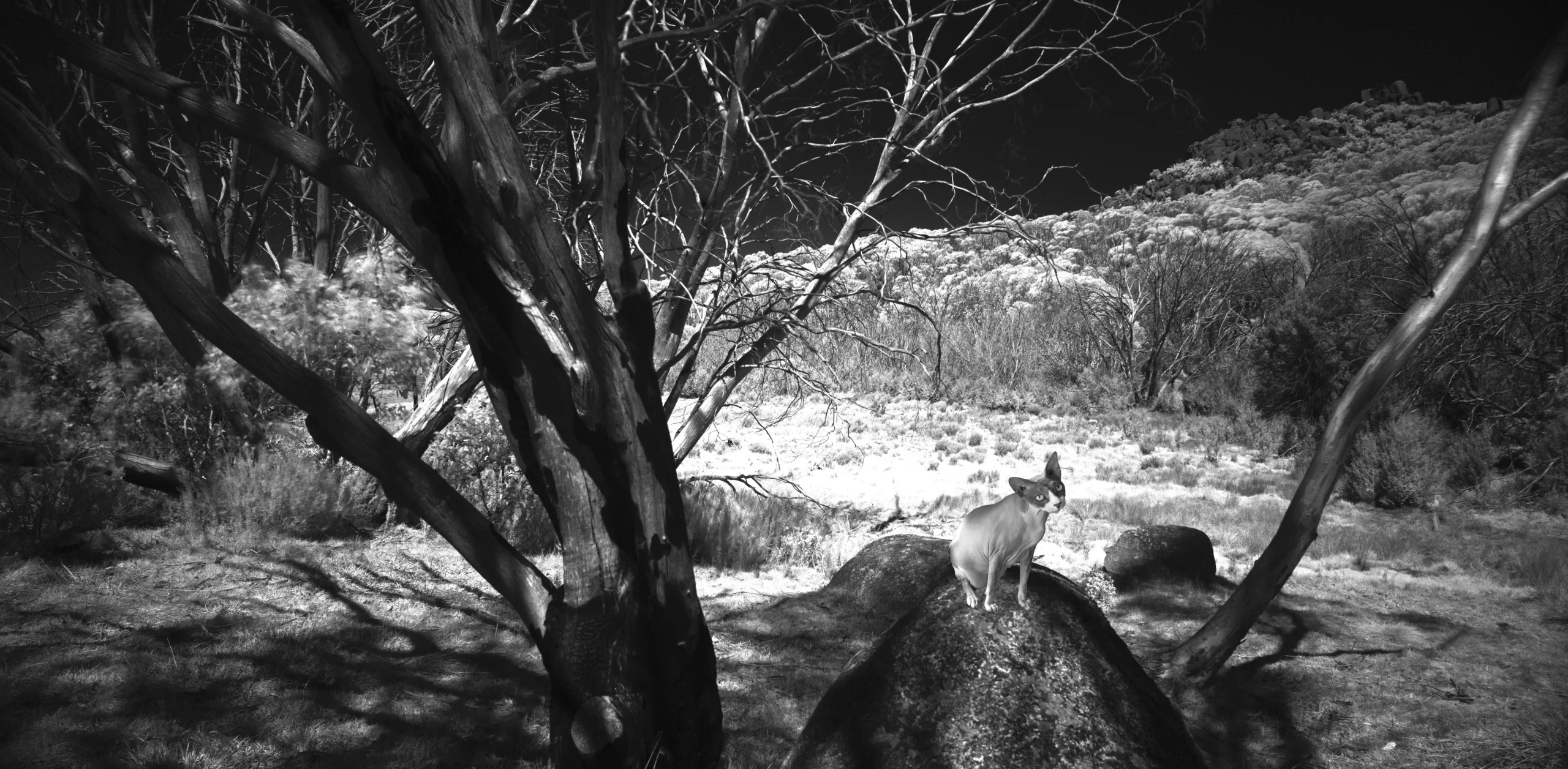
════════════════════════════════════════════════════
Top Resources for Smart Art Investing
Essential Tips for Art Collectors Buying Prints
Curating Your Own Private Art Collection
Beginner Art Collector Pitfalls and How to Prevent Them
Case Studies of Notorious Art Buying Mistakes
From Collecting to Investing : Art’s Financial Side
The Art Buying Timeless Guide : How to Invest in Art
A Beginner’s Guide to Investing in Art Like A Pro
Exploring the Variables Behind the Price of an Artwork
How Rarity, Condition & Artist Influence Art Prices
NFT Art Explained: A New Era of Digital Creativity
Investing in Emerging Artists : A Comprehensive Guide
Art Market Players : From Passion to Investment
Collectors & Market Trends in the Art World
Speculators and Investors in the Art Market
The Rise of Private Art Collections Globally
Fine Art Photography as a Smart Investment
Essential Tools & Insights for Art Collecting
Essential Tips for Art Collectors Buying Prints
Curating Your Own Private Art Collection
Beginner Art Collector Pitfalls and How to Prevent Them
Case Studies of Notorious Art Buying Mistakes
From Collecting to Investing : Art’s Financial Side
Buy Fine Art with Cryptocurrency – Modern Way to Collect Art
The Hidden Risks of Art Collecting: Forgeries and Provenance
Crucial Steps to Protect and Preserve Your Art Collection
Private Art Collecting for Beginners and Experts
Advanced Art Collecting Techniques
Buy Fine Art with Cryptocurrency – Modern Way to Collect Art
The Hidden Risks of Art Collecting: Forgeries and Provenance
Crucial Steps to Protect and Preserve Your Art Collection
Private Art Collecting for Beginners and Experts
Advanced Art Collecting Techniques
A Collector’s Guide to Fine Art Photography
Tax Implications of Private Art Collecting
The Rise of Private Art Collections Globally
Legal Guidance for Art Collection Ownership and Sales
Concise Guide to Art Law for Artists, Collectors, and Curators
Spotting Blue-Chip Photographers: Collector’s Guide
Fine Art Photo Icons: Luxury Market Sales Revealed
Contemporary Photo Market: Trends and Records
Protecting Your Photographic Prints for Generations
Inside the World of Private Art Collections and Their Collectors
Secrets Behind Famous Private Art Collections
Inside The World's Greatest Private Art Collection
High Profile Individuals and Their Private Art Collections
Top 200 Private Art Collections in the 21st Century
Leading 100 Private Art Collectors with $1 Billion+ in Art
Exploring the Life and Art of Herbert and Dorothy Vogel
Art, History & Heritage : Qatar Museums Uncovered
Bill Gates Private Art Collection : Masterpieces & Mystery
Explore Mark Zuckerberg's Private Art Collections & Interest
Elon Musk Impact on Art : Philanthropy and Innovation
Trump Tower : Art, Architecture, and Real Estate Legacy
Private Art Collections That Became Museums
The Legacy of Peggy Guggenheim's 20th-Century Art Collection
Private Art Collectors Who Shaped Art History
Inside The Royal Collection: Arts, Photography, Sculptures
100 Historic Masterpieces Worth Over $500 Million each
Most Expensive Photography Sales in History
Unmasking Deception: Real Cases of Art Scams and Forgeries
Case Studies of Notorious Art Buying Mistakes
30 Famous Art Forgery Cases That Fooled the World
Inside Museum Scandals: 50 Art Scams That Fooled Experts
Case Studies of the Most Expensive Art Scams of All Time
Art Scam Case Studies 1–50: Celebrity & Elite Targets Part 1
Art Scam Case Studies 51–100: Celebrity & Elite Targets Part 2
Art Scam Case Studies 101–150: Celebrity & Elite Targets Part 3
Art Scam Case Studies 151–200: Celebrity & Elite Targets Part 4
Art Scam Case Studies 201–250: Celebrity & Elite Targets Part 5
Art Scam Case Studies 251–300: Celebrity & Elite Targets Part 6
References
- Bailey, M. (2019). The Art of Investing in Art: A Guide to Buying Art as an Investment. Oxford University Press. ISBN 978-0198748686.
- Yogev, T. (2018). The Art Market: A Global Perspective. Routledge. ISBN 978-0367330417.
- Thompson, D. (2017). The $12 Million Stuffed Shark: The Curious Economics of Contemporary Art. St. Martin’s Press. ISBN 978-0312283603.
Globetrotting Dentist and Australian Artists and Emerging Photographer to watch in 2025 Dr Zenaidy Castro. She is a famous cosmetic dentist in Melbourne Australia. Australia’s Best Cosmetic Dentist Dr Zenaidy Castro-Famous cosmetic dentist in Melbourne Australia and award-winning landscape photographer quote: Trust me, when you share your passions with the world, the world rewards you for being so generous with your heart and soul. Your friends and family get to watch you bloom and blossom. You get to share your light and shine bright in the world. You get to leave a legacy of truth, purpose and love. Life just doesn’t get any richer than that. That to me is riched fulfilled life- on having to discovered your life or divine purpose, those passion being fulfilled that eventuates to enriching your soul. Famous Australian female photographer, Australia’s Best woman Photographer- Dr Zenaidy Castro – Fine Art Investment Artists to Buy in 2025. Buy Art From Emerging Australian Artists. Investing in Art: How to Find the Next Collectable Artist. Investing in Next Generation Artists Emerging photographers. Australian Artists to Watch in 2025. Australasia’s Top Emerging Photographers 2025. Globetrotting Dentist and Australian Artists and Emerging Photographer to watch in 2025 Dr Zenaidy Castro. She is a famous cosmetic dentist in Melbourne Australia.
Globetrotting Dentist and Australian Artists and Emerging Photographer to watch in 2025 Dr Zenaidy Castro. She is a famous cosmetic dentist in Melbourne Australia. Australia’s Best Cosmetic Dentist Dr Zenaidy Castro-Famous cosmetic dentist in Melbourne Australia and award-winning landscape photographer quote: Trust me, when you share your passions with the world, the world rewards you for being so generous with your heart and soul. Your friends and family get to watch you bloom and blossom. You get to share your light and shine bright in the world. You get to leave a legacy of truth, purpose and love. Life just doesn’t get any richer than that. That to me is riched fulfilled life- on having to discovered your life or divine purpose, those passion being fulfilled that eventuates to enriching your soul. Famous Australian female photographer, Australia’s Best woman Photographer- Dr Zenaidy Castro – Fine Art Investment Artists to Buy in 2025. Buy Art From Emerging Australian Artists. Investing in Art: How to Find the Next Collectable Artist. Investing in Next Generation Artists Emerging photographers. Australian Artists to Watch in 2025. Australasia’s Top Emerging Photographers 2025. Globetrotting Dentist and Australian Artists and Emerging Photographer to watch in 2025 Dr Zenaidy Castro. She is a famous cosmetic dentist in Melbourne Australia.
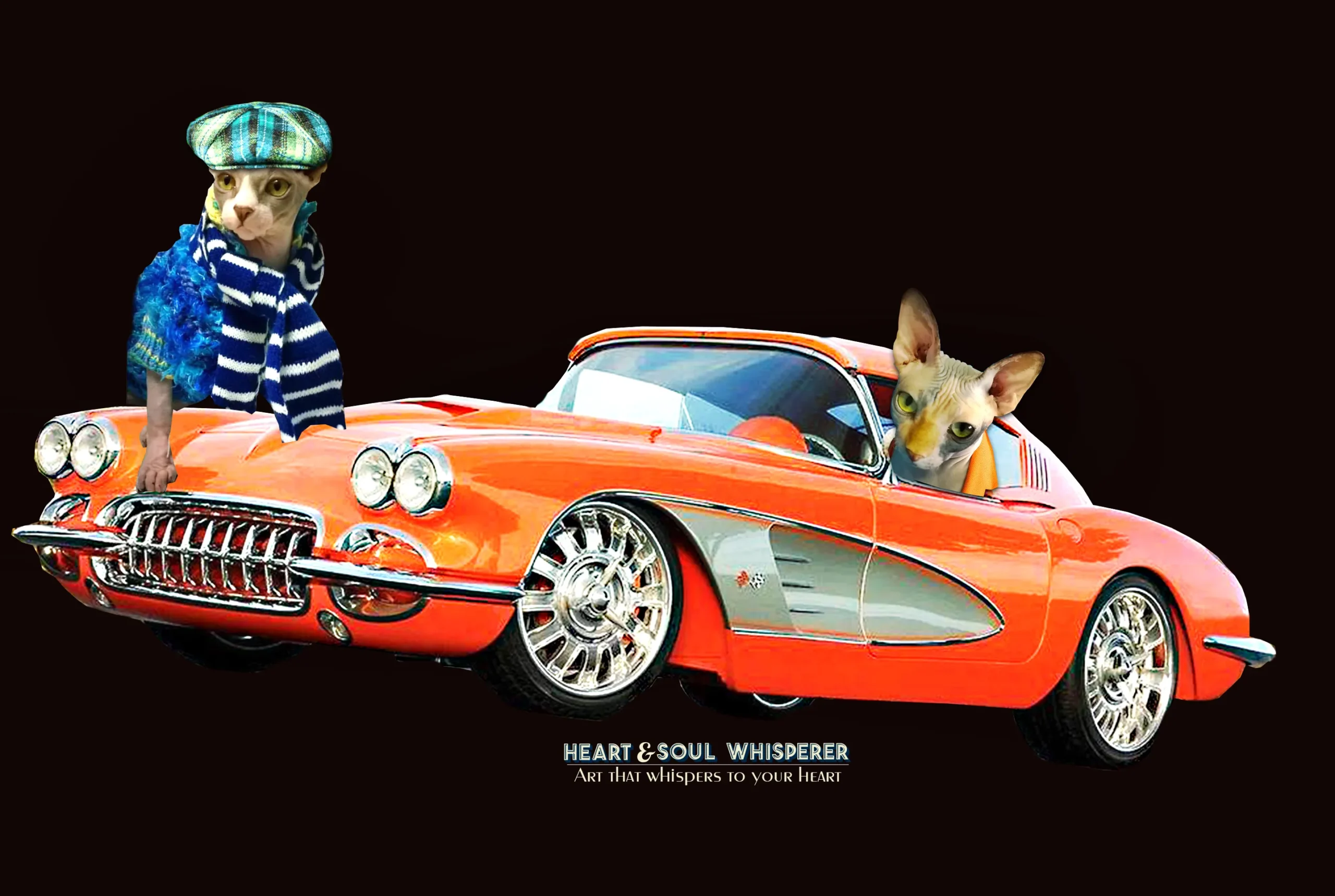
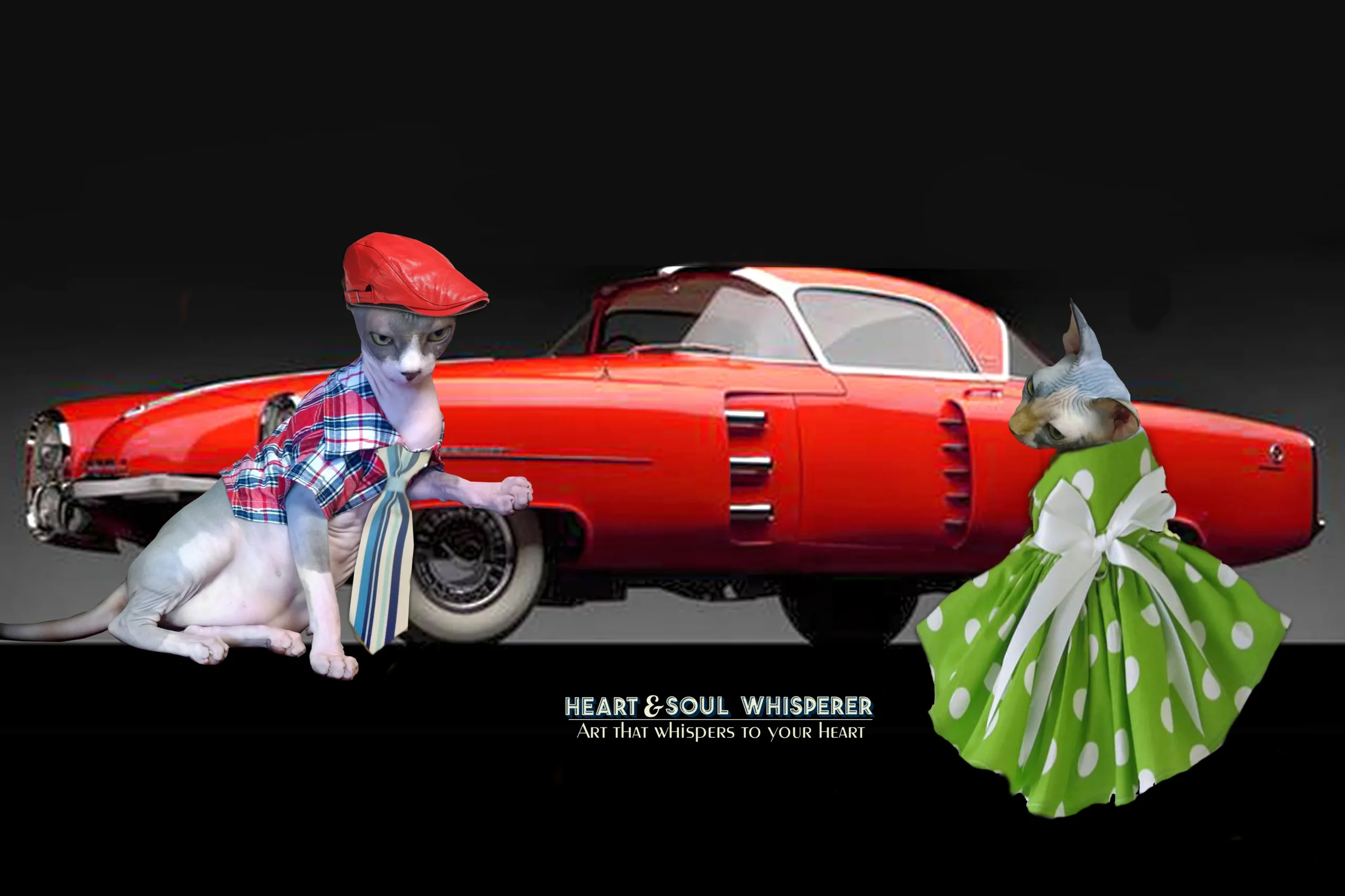
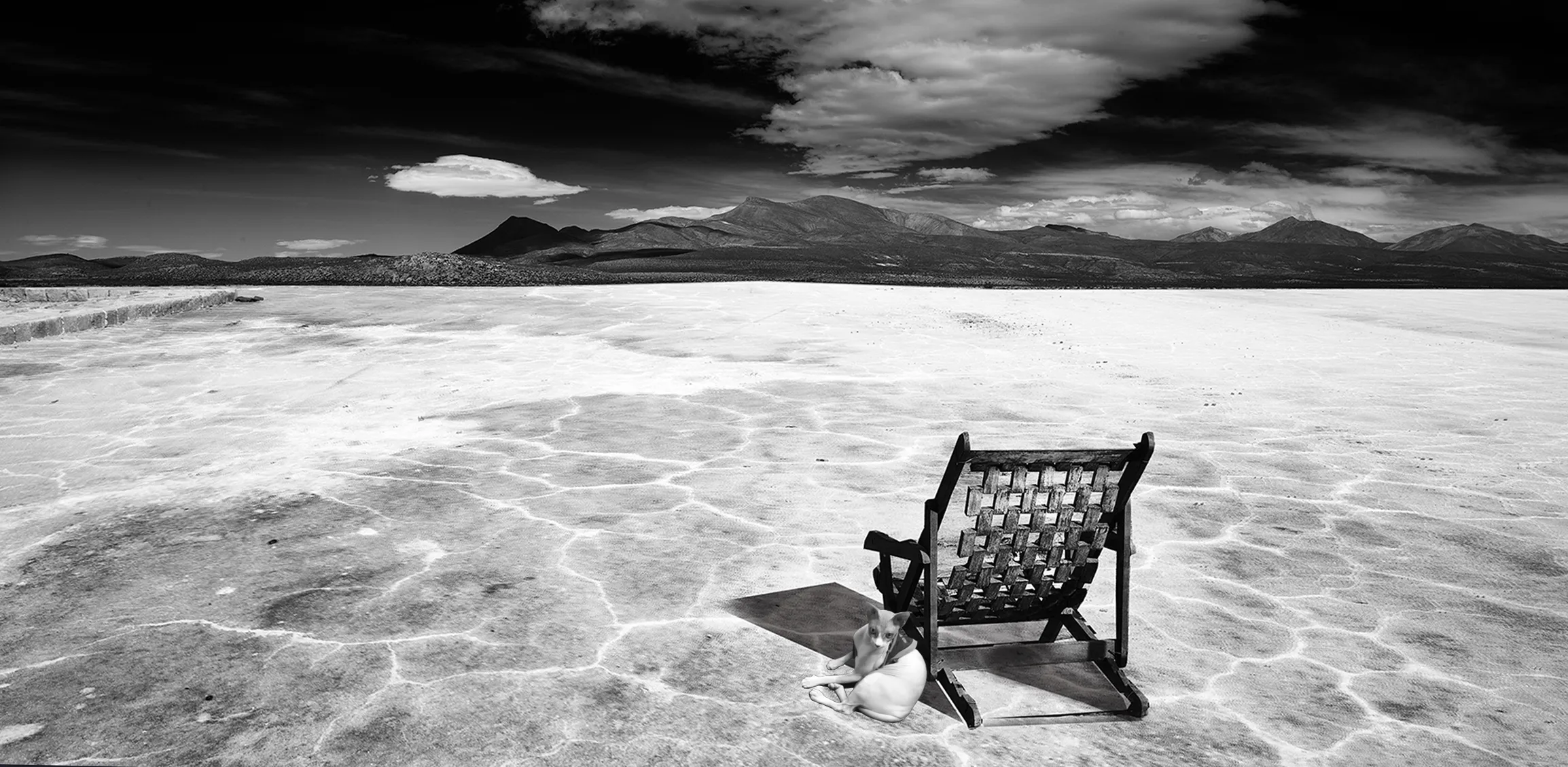
═════════════════════════════════════════════════════
Get to Know the Creative Force Behind the Gallery
About the Artist ➤ “Step into the world of Dr. Zenaidy Castro — where vision and passion breathe life into every masterpiece”
Dr Zenaidy Castro’s Poetry ➤ "Tender verses celebrating the bond between humans and their beloved pets”
Creative Evolution ➤ “The art of healing smiles — where science meets compassion and craft”
The Globetrotting Dentist & photographer ➤ “From spark to masterpiece — the unfolding journey of artistic transformation”
Blog ➤ “Stories, insights, and inspirations — a journey through art, life, and creative musings”
As a Pet mum and Creation of Pet Legacy ➤ “Honoring the silent companions — a timeless tribute to furry souls and their gentle spirits”
Pet Poem ➤ “Words woven from the heart — poetry that dances with the whispers of the soul”
As a Dentist ➤ “Adventures in healing and capturing beauty — a life lived between smiles and lenses”
Cosmetic Dentistry ➤ “Sculpting confidence with every smile — artistry in dental elegance”
Founder of Vogue Smiles Melbourne ➤ “Where glamour meets precision — crafting smiles worthy of the spotlight”
Unveil the Story Behind Heart & Soul Whisperer
The Making of HSW ➤ “Journey into the heart’s creation — where vision, spirit, and artistry converge to birth a masterpiece”
The Muse ➤ “The whispering spark that ignites creation — inspiration drawn from the unseen and the divine”
The Sacred Evolution of Art Gallery ➤ “A spiritual voyage of growth and transformation — art that transcends time and space”
Unique Art Gallery ➤ “A sanctuary of rare visions — where each piece tells a story unlike any other”
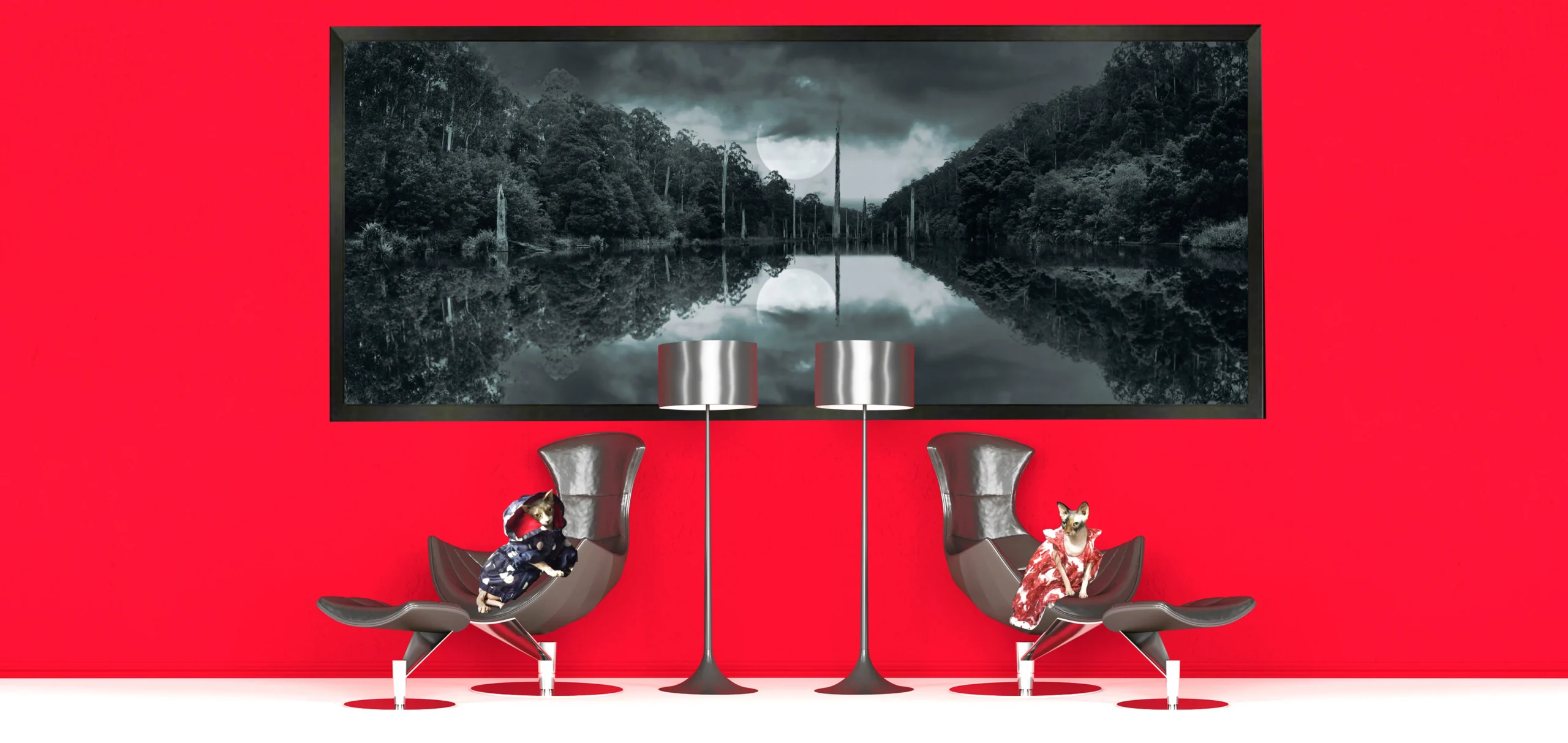
Globetrotting Dentist and Australian Artists and Emerging Photographer to watch in 2025 Dr Zenaidy Castro. She is a famous cosmetic dentist in Melbourne Australia. Australia’s Best Cosmetic Dentist Dr Zenaidy Castro-Famous cosmetic dentist in Melbourne Australia and award-winning landscape photographer quote: Trust me, when you share your passions with the world, the world rewards you for being so generous with your heart and soul. Your friends and family get to watch you bloom and blossom. You get to share your light and shine bright in the world. You get to leave a legacy of truth, purpose and love. Life just doesn’t get any richer than that. That to me is riched fulfilled life- on having to discovered your life or divine purpose, those passion being fulfilled that eventuates to enriching your soul. Famous Australian female photographer, Australia’s Best woman Photographer- Dr Zenaidy Castro – Fine Art Investment Artists to Buy in 2025. Buy Art From Emerging Australian Artists. Investing in Art: How to Find the Next Collectable Artist. Investing in Next Generation Artists Emerging photographers. Australian Artists to Watch in 2025. Australasia’s Top Emerging Photographers 2025. Globetrotting Dentist and Australian Artists and Emerging Photographer to watch in 2025 Dr Zenaidy Castro. She is a famous cosmetic dentist in Melbourne Australia.
Globetrotting Dentist and Australian Artists and Emerging Photographer to watch in 2025 Dr Zenaidy Castro. She is a famous cosmetic dentist in Melbourne Australia. Australia’s Best Cosmetic Dentist Dr Zenaidy Castro-Famous cosmetic dentist in Melbourne Australia and award-winning landscape photographer quote: Trust me, when you share your passions with the world, the world rewards you for being so generous with your heart and soul. Your friends and family get to watch you bloom and blossom. You get to share your light and shine bright in the world. You get to leave a legacy of truth, purpose and love. Life just doesn’t get any richer than that. That to me is riched fulfilled life- on having to discovered your life or divine purpose, those passion being fulfilled that eventuates to enriching your soul. Famous Australian female photographer, Australia’s Best woman Photographer- Dr Zenaidy Castro – Fine Art Investment Artists to Buy in 2025. Buy Art From Emerging Australian Artists. Investing in Art: How to Find the Next Collectable Artist. Investing in Next Generation Artists Emerging photographers. Australian Artists to Watch in 2025. Australasia’s Top Emerging Photographers 2025. Globetrotting Dentist and Australian Artists and Emerging Photographer to watch in 2025 Dr Zenaidy Castro. She is a famous cosmetic dentist in Melbourne Australia.
═══════════════════════════════════════════════════
At Heart & Soul Whisperer Art Gallery, every coloured and black and white photograph tells a story beyond sight—an emotional journey captured in light, shadow, and soul. Founded by visionary artist Dr Zenaidy Castro, our curated collections—spanning landscapes, waterscapes, abstract art, and more—offer a timeless elegance that transcends fleeting trends. Whether enriching private residences, corporate offices, healthcare facilities, hospitals, or hospitality spaces, our artworks are designed to transform environments into sanctuaries of memory, beauty, and enduring inspiration. Let your walls whisper stories that linger—reflections of art, spirit, and the love that connects us all.
Whispers in Monochrome — The Artist’s Signature Collection
Limited Editions ➤ “Treasures of Time, Rare Whispers on Canvas — Art as Unique as Your Soul”
Infrared ➤ “Beyond the Visible: Worlds Revealed in Fiery Hues and Hidden Radiance”
Vintage & Retro ➤ “Echoes of Elegance, Timeless Stories Wrapped in Nostalgic Light”
Film Emulation Photography ➤ “Where Grain Meets Grace — Classic Souls Captured in Modern Frames”
Minimalism ➤ “Pure Essence, Quiet Power — Beauty Found in the Art of Less”
Chiaroscuro Landscapes ➤ “Light and Shadow’s Dance: Landscapes Painted in Dramatic Contrast”
Moody Landscapes ➤ “Whispers of Storm and Silence — Nature’s Emotions in Every Frame”
Mystical Landscapes ➤ “Enchanted Realms Where Spirit Meets Horizon, Dream and Reality Blur”
Moody and Mystical ➤ “A Symphony of Shadows and Spirit — Landscapes That Speak to the Soul”
Discover the Vibrance of Landscapes and Waterscapes
Country & Rural ➤ “Sun-kissed fields and quiet homesteads — where earth and heart meet in vibrant harmony”
Mountain ➤ “Majestic peaks bathed in golden light — nature’s grandeur painted in every hue”
Trees & Woodlands ➤ “Whispers of leaves and dappled sunlight — a living tapestry of green and gold”
At The Water’s Edge ➤ “Ripples of color dance on tranquil shores — where land and liquid embrace in serene beauty”
Ethereal Landscapes and Waterscapes in Monochrome
Country & Rural Landscapes ➤ “Monochrome whispers of earth and toil — the quiet poetry of open lands”
Australian Rural Landscapes ➤ “Shadowed vistas of sunburnt soil — raw beauty in timeless contrast”
The Simple Life - Country Living ➤ “Essence distilled — moments of calm in stark black and white”
Cabin Life & shacks ➤ “Silent shelters bathed in light and shadow — stories carved in wood and time”
Mountain Landscapes ➤ “Peaks etched in silver and shadow — grandeur carved by nature’s hand”
Trees & Woodlands ➤ “Branches weaving tales in shades of gray — forests alive in monochrome breath”
At The Water’s Edge ➤ “Edges where light and dark meet — reflections of stillness and flow”
Lakes & Rivers ➤ “Flowing grace captured in stark clarity — water’s endless journey in shades of gray”
Waterfalls ➤ “Cascades frozen in black and white — movement captured in eternal pause”
Beach, Coastal & Seascapes ➤ “Silent shores and textured tides — nature’s drama in monochrome waves”
Reflections ➤ “Mirrored worlds in shades of shadow — where reality blurs into dream”
Snowscapes ➤ “White silence pierced by shadow — frozen landscapes of quiet wonder”
Desert & The Outback ➤ “Vastness distilled into contrast — endless horizons in black and white”
A Journey Through Curated Beauty
Black and White Photography ➤ “Timeless tales told in shadow and light — where every tone speaks a silent story”
Colour Photography ➤ “A vivid symphony of hues — life captured in its most radiant form”
Abstract Art & Abstracted Labdscapes ➤ “Beyond form and figure — emotions and visions woven into pure expression”
Digital Artworks ➤ “Where imagination meets technology — digital dreams crafted with artistic soul”
People ➤ “Portraits of the human spirit — stories told through eyes, expressions, and silent moments”
═══════════════════════════════════════════════════


